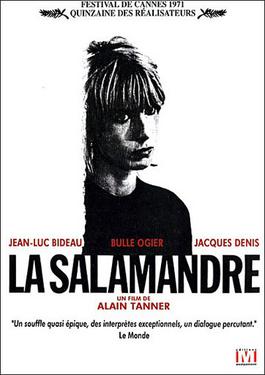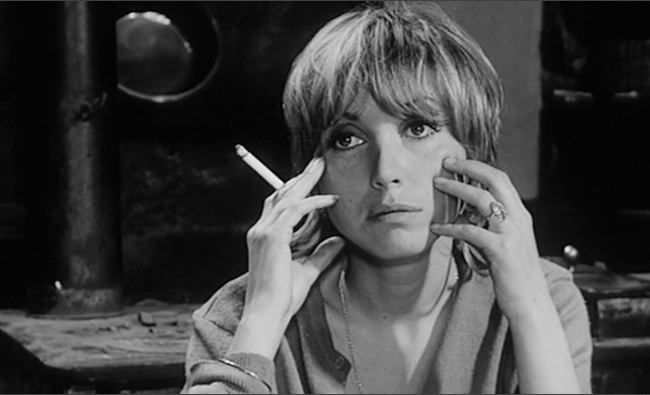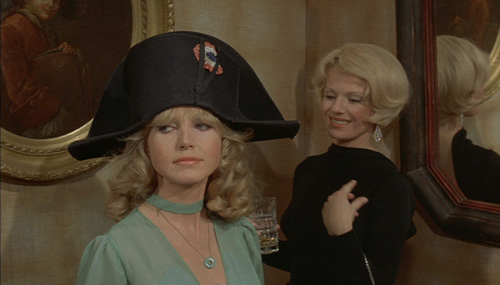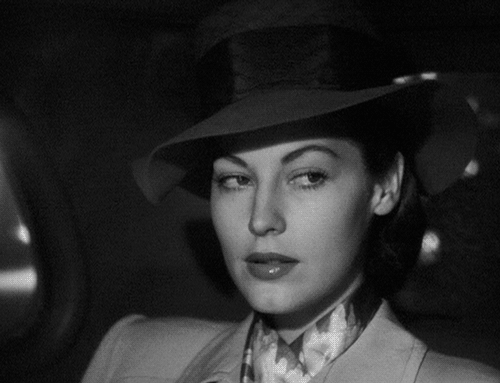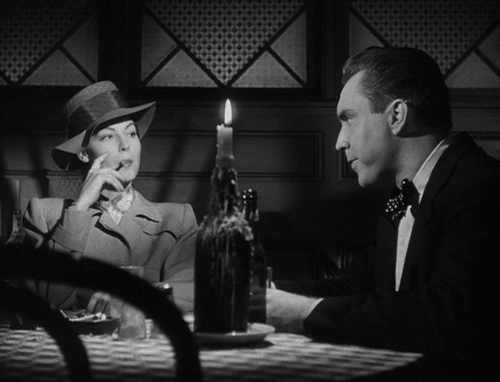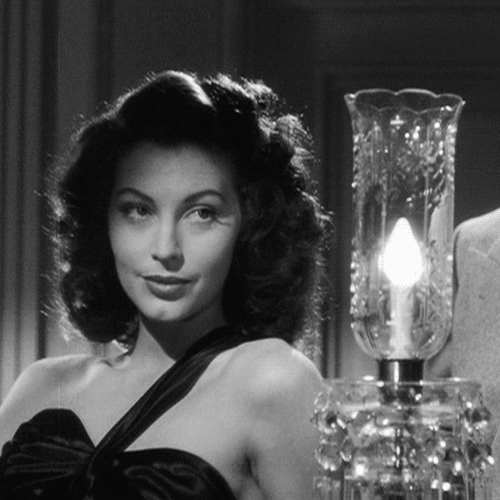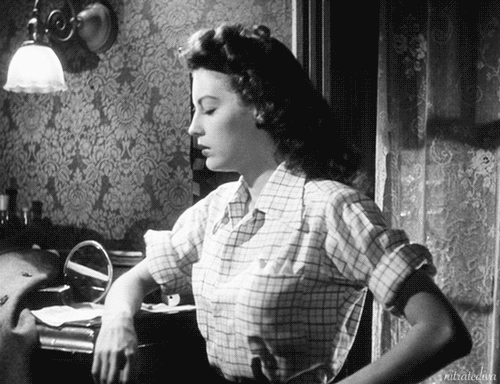Brief Thoughts on Lee Remick, “Anatomy of a Murder,” McCarthyism, and the Motion Picture Code.


The incomparably-enticing Lee Remick—bruised, but still enticing.
The GIF file and the three photos above it are from the ground-breaking 1959 release of director Otto Preminger’s “Anatomy of a Murder.”
Remick turns in a stellar, sensuality-laced portrayal of Laura Manion, a sexy, free-spirited young married woman who becomes the victim of an apparent violent rape. Her husband, Lieutenant Frederick Manion (”Manny”), a career military man played by Ben Gazzara, exacts revenge by killing her rapist. Those elements alone would be the basis of an interesting tale. However, ambiguity swirls around within the storyline, laying the seeds of doubt as to the veracity of Laura’s and Manny’s characters throughout this brilliantly conceived screenplay; all of which makes for an even more taut drama.
The film begins within the aftermath of the rape and murder, weaving the story concerning the details of the events through the ensuing courtroom trial where Lt. Manion is defended by his lawyer, Paul Biegler, portrayed by the versatile James Stewart. George C. Scott, Eve Arden, and Author O’Connell, among others, also give fine performances, as well.
Parenthetically, but most notably—and an extremely fascinating fact, as well—through a stroke of casting genius (thanks in part to a suggestion made by Spencer Tracy’s assistant), Preminger called on real-life counselor/lawyer Joseph N. Welch to play the role of the trial judge. In US history, Welch constitutes a significant footnote within the evolution of the American saga.
Along with other important events, of course—in part, I am referring to the role Edward R. Murrow played in challenging the legitimacy of McCarthy’s reign of terror, not to mention the eventual senatorial censure in 1954—it was partly due to Welch’s conduct in his role as chief counsel for the US Army during the “Army-McCarthy hearings” which helped in deflating the demagogic, gasbag Republican senator from Wisconsin, Joseph McCarthy, while going far in at least beginning to perpetuate a conclusion to the dark, right-wing nightmare that was “McCarthyism.”

At a point in the proceedings, while defending the character of an associate who was being cited in the hearing as having communist ties, and while also admonishing McCarthy for naming that associate on national TV, Welch confronted the bloviating Senator in disgust, saying; “You’ve done enough. Have you no sense of decency, sir? At long last, have you left no sense of decency?”
Among the important factors that make this movie significant surrounds its sensitive subject matter—its then-deemed ‘bold’ sexual language (the existence of which motivated a legal ruling that temporarily banned its showing in Chicago), and the sexually-repressive time frame within which it was released.
But mostly, in my opinion, it represented an early and brave, in-the-face, direct challenge to The Motion Picture Production Code, better known as the “Hays Code”—a set of “moral” conduct production “standards/guidelines”—concocted by prominent Christian religious figures at the time, then presented to, adopted and dictated by the industry’s trade association called the Motion Picture Producers and Distributors of America (MPPDA), whose president was Will H. Hays, a former chairman of the Republican National Committee (RNC), as a self-regulating censoring tool.
Also, as a musician, I would be remiss if I didn’t mention the fact that this film prominently features a phenomenal soundtrack; its music was brilliantly scored and performed by one of my all-time favorites, jazz legend Duke Ellington (who, incidentally, appears in a brief-but-memorable scene)! The high trumpet note hit at the very end of the film is one for the record books!
Oh, and by the way; “Anatomy of a Murder” is the only place where you get to hear brilliant, sometimes-comedic character actor Howard McNear—most popularly known to US audiences for his role as the gossipy, breathy-voiced, vague-and-somewhat-slow-witted, “Floyd Lawson,” proprietor of Mayberry’s local barber shop on the mostly squeaky-clean 1960s TV series “The Andy Griffith Show“—who, while playing a witnessing doctor taking the stand in one of the courtroom scenes, utters the sentence; “They wanted me to make a test for the presence of sperm…on the person of a Mrs. Frederick Manion…” ツ



![Emphatic-LEE! Lee Remick "Anatomy of a Murder" [1959] Emphatic-LEE! Lee Remick "Anatomy of a Murder" [1959]](https://i0.wp.com/georgetyerbyter.wordpress.com/wp-content/uploads/2018/07/003.jpg?w=272&h=175&ssl=1)
![Definite-LEE! Lee Remick in repose "Anatomy of a Murder" [1959] Definite-LEE! Lee Remick in repose "Anatomy of a Murder" [1959]](https://i0.wp.com/georgetyerbyter.wordpress.com/wp-content/uploads/2018/07/screen-shot-2011-04-14-at-1-46-38-am.png?w=272&h=170&ssl=1)
